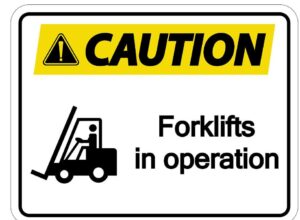Welcome to
On Feet Nation
Members
-
jack Online
-
-
Blog Posts
Top Content
Efficient Techniques for Handling Lift Trucks: A Comprehensive Guide
Efficient Techniques for Handling Lift Trucks: A Comprehensive Guide
Introduction Handling lift trucks, also known as forklifts, efficiently is crucial for maintaining productivity and safety in warehouses, manufacturing plants, and distribution centers. Proper techniques and best practices can significantly reduce the risk of accidents, enhance operational efficiency, and extend the lifespan of the equipment. This article explores effective methods for managing lift trucks, emphasizing the importance of training, maintenance, and operational procedures.
Training and Certification One of the foundational elements of efficient lift truck operation is comprehensive training and certification for operators. Well-trained operators are not only more productive but also contribute to a safer work environment. Key components of effective training include:
 Forklift | China Manufacturer Trade Price on Materials Handling lif...
Forklift | China Manufacturer Trade Price on Materials Handling lif...
Understanding Equipment: Operators should be familiar with the specific type of lift truck they will be using, including its controls, capacities, and limitations.
Safety Protocols: Emphasizing the importance of safety, including proper loading techniques, balance maintenance, and safe driving practices.
Hands-On Practice: Providing ample opportunity for operators to practice under supervision before handling real tasks independently.
Regular Maintenance Routine maintenance is essential to ensure that lift trucks operate smoothly and safely. A well-maintained lift truck is less likely to experience breakdowns, which can disrupt operations and cause delays. Key maintenance practices include:
Daily Inspections: Operators should perform daily checks before using the lift truck, focusing on tires, brakes, steering, and hydraulic systems.
Scheduled Servicing: Adhering to the manufacturer’s recommended service schedule to address wear and tear, and replace parts as needed.
Record Keeping: Maintaining detailed records of all inspections, repairs, and maintenance activities to track the lift truck’s condition over time.
Operational Best Practices Implementing best practices for lift truck operation can enhance efficiency and safety. Here are some crucial techniques:
Load Handling: Ensure loads are within the lift truck’s capacity, are balanced, and secured. Avoid sudden movements and high-speed maneuvers.
Path Planning: Operators should plan their routes in advance, considering the layout of the workspace, potential obstacles, and pedestrian traffic.
Communication: Establish clear communication protocols, especially in busy environments. Use signals, horns, and spotters when necessary.
Energy Management: For electric lift trucks, manage battery charging and maintenance properly to avoid downtime. For fuel-powered trucks, ensure regular fuel checks and refueling.
Conclusion Efficient lift truck handling requires a combination of skilled operators, rigorous maintenance routines, and adherence to best operational practices. By investing in proper training, maintaining equipment, and following safe and efficient techniques, businesses can maximize productivity, reduce risks, and ensure the longevity of their lift trucks. As the demand for efficient material handling continues to grow, these practices will play a pivotal role in meeting the challenges of modern logistics and manufacturing.
Introduction Handling lift trucks, also known as forklifts, efficiently is crucial for maintaining productivity and safety in warehouses, manufacturing plants, and distribution centers. Proper techniques and best practices can significantly reduce the risk of accidents, enhance operational efficiency, and extend the lifespan of the equipment. This article explores effective methods for managing lift trucks, emphasizing the importance of training, maintenance, and operational procedures.
Training and Certification One of the foundational elements of efficient lift truck operation is comprehensive training and certification for operators. Well-trained operators are not only more productive but also contribute to a safer work environment. Key components of effective training include:
 Forklift | China Manufacturer Trade Price on Materials Handling lif...
Forklift | China Manufacturer Trade Price on Materials Handling lif...Understanding Equipment: Operators should be familiar with the specific type of lift truck they will be using, including its controls, capacities, and limitations.
Safety Protocols: Emphasizing the importance of safety, including proper loading techniques, balance maintenance, and safe driving practices.
Hands-On Practice: Providing ample opportunity for operators to practice under supervision before handling real tasks independently.
Regular Maintenance Routine maintenance is essential to ensure that lift trucks operate smoothly and safely. A well-maintained lift truck is less likely to experience breakdowns, which can disrupt operations and cause delays. Key maintenance practices include:
Daily Inspections: Operators should perform daily checks before using the lift truck, focusing on tires, brakes, steering, and hydraulic systems.
Scheduled Servicing: Adhering to the manufacturer’s recommended service schedule to address wear and tear, and replace parts as needed.
Record Keeping: Maintaining detailed records of all inspections, repairs, and maintenance activities to track the lift truck’s condition over time.
Operational Best Practices Implementing best practices for lift truck operation can enhance efficiency and safety. Here are some crucial techniques:
Load Handling: Ensure loads are within the lift truck’s capacity, are balanced, and secured. Avoid sudden movements and high-speed maneuvers.
Path Planning: Operators should plan their routes in advance, considering the layout of the workspace, potential obstacles, and pedestrian traffic.
Communication: Establish clear communication protocols, especially in busy environments. Use signals, horns, and spotters when necessary.
Energy Management: For electric lift trucks, manage battery charging and maintenance properly to avoid downtime. For fuel-powered trucks, ensure regular fuel checks and refueling.
Conclusion Efficient lift truck handling requires a combination of skilled operators, rigorous maintenance routines, and adherence to best operational practices. By investing in proper training, maintaining equipment, and following safe and efficient techniques, businesses can maximize productivity, reduce risks, and ensure the longevity of their lift trucks. As the demand for efficient material handling continues to grow, these practices will play a pivotal role in meeting the challenges of modern logistics and manufacturing.
© 2025 Created by PH the vintage.
Powered by
![]()
You need to be a member of On Feet Nation to add comments!
Join On Feet Nation